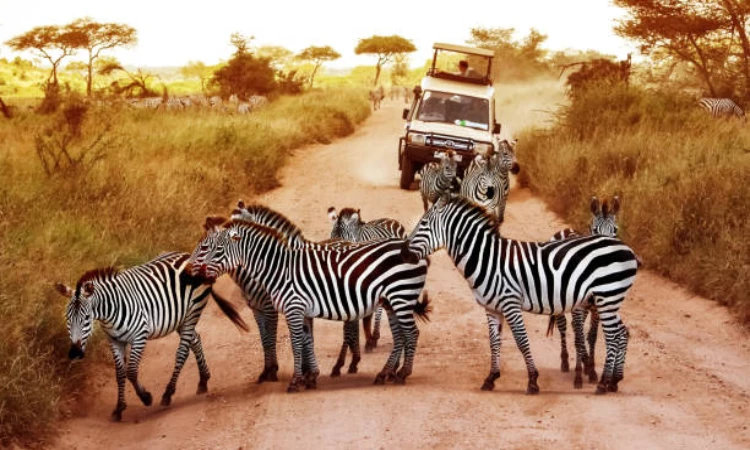What Is the Best Time to Go on a Safari in Tanzania?
Choosing the best time for a safari in Tanzania involves understanding the country’s unique climate and wildlife patterns. The dry season from June to October offers ideal conditions for wildlife viewing, while the Great Migration captivates visitors with its dramatic spectacle. However, other months also present distinct advantages, such as the calving season in January and February. Each period has its own appeal, prompting travelers to reflect on their priorities when planning their adventure.
Understanding Tanzania’s Climate and Seasons
Tanzania’s climate is a significant factor in planning an unforgettable safari experience. The country features two main seasons: the dry season and the wet season. The dry season, from June to October, offers ideal wildlife viewing as animals congregate around water sources. Conversely, the wet season, from November to May, brings lush landscapes and vibrant flora, although wildlife can be less visible. Understanding these seasonal nuances is vital for safari enthusiasts aiming to maximize their experience. Each season presents unique opportunities for photography and wildlife encounters, making it essential to select the right time to start a safari in Tanzania.
The Great Migration: Timing Your Visit
When is the best time to witness the awe-inspiring Great Migration in East Africa? For those planning a safari to Tanzania, the period between June and September is often highlighted. During these months, vast herds of wildebeest and zebras traverse the Serengeti, crossing the Mara River in search of greener pastures. This dramatic spectacle offers unparalleled viewing opportunities, as predators are also drawn to the migration. While the timing can vary each year due to climatic conditions, a safari to Tanzania during this peak period promises an unforgettable experience, showcasing nature’s raw power and resilience. Click over here to book safari Tanzania.
Best Months for Wildlife Viewing
The thrill of wildlife viewing in Tanzania peaks during specific months, offering safari enthusiasts the chance to observe an incredible variety of animals in their natural habitats. The dry season, from June to October, is widely considered the best time for safaris in Tanzania, as animals congregate around water sources, making them easier to spot. Additionally, January and February are prime months for witnessing the birthing season, when many species, including wildebeest and zebras, give birth. These months provide unique opportunities, enhancing the overall safari experience and allowing visitors to witness the rich biodiversity Tanzania has to offer.
Off-Peak Travel: Benefits and Considerations
While the peak months for wildlife viewing in Tanzania attract numerous visitors enthusiastic to experience the vibrant natural displays, off-peak travel presents a unique alternative worth considering. During these less crowded times, travelers can enjoy a more exclusive safari Tanzania experience, with the opportunity to observe wildlife without the usual throngs. Additionally, prices for accommodations and tours often decrease, making it more accessible for budget-conscious adventurers. However, visitors should be aware of potential weather challenges or limited animal activity. Overall, off-peak travel offers an intimate connection with Tanzania’s wilderness, appealing to those seeking tranquility and unique encounters.
Special Events and Phenomena to Experience
Beyond the routine wildlife sightings, Tanzania offers a variety of special events and phenomena that can enhance the safari experience markedly. The Great Migration, occurring annually from June to October, captivates travelers as millions of wildebeest and zebras traverse the Serengeti and Mara River. Additionally, the calving season from January to March provides a unique opportunity to witness newborn animals in Ngorongoro Crater. Unique cultural festivals, such as the Lake Natron Flamingo Festival, also add depth to a Tanzania safari. Each event not only enriches the journey but also offers insights into the intricate relationships between wildlife, culture, and landscape.
Conclusion
To sum up, the ideal time for a safari in Tanzania is during the dry season from June to October, when wildlife is abundant and easily spotted. This period not only aligns with the breathtaking Great Migration but also offers exceptional viewing experiences as animals gather around limited water sources. For those seeking to witness the miracle of new life, January and February provide unique opportunities. Ultimately, understanding these seasonal dynamics enhances the safari experience, ensuring unforgettable encounters with Tanzania’s diverse wildlife.

